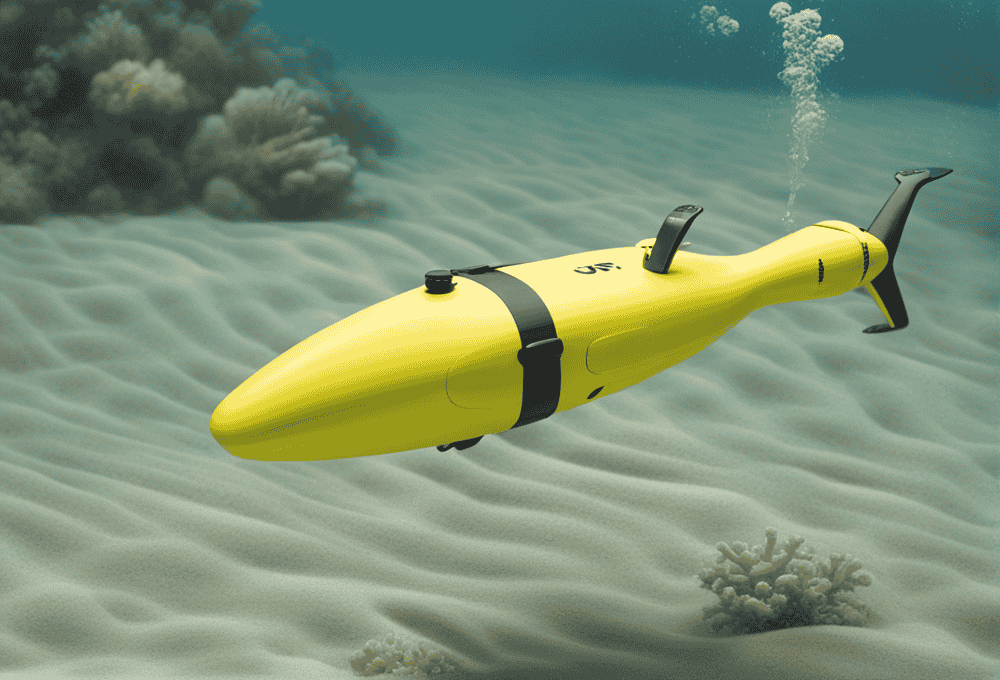Introduction to water-related asset maintenance
Water-related asset maintenance is a crucial aspect of infrastructure management. It involves the inspection, repair, and maintenance of various structures such as pipelines, sea walls, jetties, docks, and other underwater assets. These assets play a vital role in industries like oil and gas, maritime, and environmental management. However, maintaining these assets comes with its own set of challenges.

Challenges in water-related asset maintenance
Maintaining water-related assets can be a complex and expensive endeavor. Traditional inspection methods often require divers or costly equipment, leading to high operational costs and risks to human safety. Additionally, accessing hard-to-reach places and accurately detecting issues such as corrosion, thickness, cracks, fractures, leaks, and structural problems can be challenging.
The role of technology in enhancing efficiency and cost-effectiveness
Technology has revolutionized various industries, and water-related asset maintenance is no exception. One significant technological advancement in this field is the use of remotely controlled aquatic drones, also known as Remotely Operated Vehicles (ROVs). These state-of-the-art machines provide a cost-effective and efficient solution for inspecting and maintaining water-related assets.
Introduction to remotely controlled aquatic drones (ROVs)
Remotely controlled aquatic drones are unmanned vehicles designed to operate underwater. They are equipped with advanced sensors, cameras, and other cutting-edge technologies that allow for comprehensive inspections of water-related assets. ROVs can be operated remotely by trained personnel, eliminating the need for divers and reducing the associated risks and costs.
Benefits of using aquatic drones for infrastructure maintenance
The use of aquatic drones offers several significant benefits for water-related asset maintenance. Firstly, these drones enable predictive maintenance, allowing for the early detection of issues before they escalate into costly problems. By regularly inspecting assets using ROVs, maintenance teams can identify and address potential threats, such as corrosion, thickness variations, cracks, fractures, leaks, and structural issues.
Predictive maintenance using aquatic drones
Aquatic drones facilitate predictive maintenance by collecting valuable data during inspections. The data gathered by these drones can be analyzed using advanced algorithms and machine learning techniques to identify patterns and predict potential asset failures. This proactive approach helps maintenance teams develop targeted maintenance plans, minimizing asset downtime and maximizing operational efficiency (OPEX).
Types of issues detected by aquatic drones – corrosion, thickness, cracks, fractures, leaks, structural issues
Aquatic drones are equipped with a variety of sensors that can detect various issues in water-related assets. These sensors can identify corrosion, measure thickness variations, detect cracks and fractures, pinpoint leaks, and identify structural issues. By providing accurate and detailed information, aquatic drones enable maintenance teams to prioritize repairs and allocate resources effectively.
Importance of accurate detection and inspection for water-related assets
Accurate detection and inspection are crucial for water-related assets. Failure to identify and address potential issues in a timely manner can lead to catastrophic consequences, including environmental damage, costly repairs, and even accidents. Aquatic drones play a vital role in ensuring that inspections are thorough and precise, reducing the risk of unforeseen failures and ensuring the longevity of these assets.
Minimizing asset downtime and maximizing OPEX with aquatic drones
Asset downtime can be a significant concern in water-related asset maintenance. Any interruption in operations can lead to financial losses and disrupt supply chains. Aquatic drones enable efficient inspections, reducing the time required for manual inspections and maintenance operations. By minimizing asset downtime, businesses can maximize their operational efficiency and overall profitability.
Enhancing safety and access to dangerous and hard-to-reach places
One of the most significant advantages of using aquatic drones is the enhanced safety they offer. By eliminating the need for human divers in hazardous environments, these drones significantly reduce the risk of accidents and injuries. Moreover, aquatic drones can access hard-to-reach places that are dangerous or difficult for humans to reach, providing comprehensive inspections without compromising safety.
Applications of aquatic drones in water-related asset maintenance
Aquatic drones have a wide range of applications in water-related asset maintenance. They can be used to inspect and maintain oil and gas pipelines, sea walls, jetties, docks, and other underwater structures. Whether it’s assessing the integrity of a pipeline or examining the condition of a sea wall, aquatic drones provide a cost-effective and efficient solution.
Utilizing multi-sensor and latest sensor technologies for comprehensive inspections
Aquatic drones utilize multi-sensor and the latest sensor technologies to conduct comprehensive inspections. These drones are equipped with high-resolution cameras, sonar systems, and other advanced sensors that provide accurate and detailed data. By combining data from various sensors, maintenance teams can obtain a holistic view of the asset’s condition, allowing for better decision-making and targeted repairs.
Creating 3D models and data interpretation for better decision-making
In addition to collecting data, aquatic drones can also create 3D models of water-related assets. These models provide a visual representation of the asset’s condition, allowing maintenance teams to identify potential problem areas and plan repairs accordingly. Furthermore, data interpretation using advanced algorithms and machine learning techniques helps extract valuable insights from the collected data, enabling better decision-making and more efficient maintenance strategies.
Case studies showcasing the effectiveness of aquatic drones in asset maintenance
Numerous case studies have demonstrated the effectiveness of aquatic drones in water-related asset maintenance. For example, in the oil and gas industry, ROVs have been successfully used to inspect and maintain underwater pipelines, reducing operational costs and minimizing the risk of environmental incidents. Similarly, in maritime infrastructure maintenance, aquatic drones have provided accurate and timely inspections of sea walls, jetties, and docks, enabling proactive maintenance and cost savings.
Conclusion: The future of technology in water-related asset maintenance
The use of remotely controlled aquatic drones has revolutionized the field of water-related asset maintenance. These advanced machines enhance efficiency, cost-effectiveness, and safety in inspections and repairs. As technology continues to advance, we can expect even more sophisticated aquatic drones and sensor technologies to further improve the maintenance of water-related assets. To learn more about the capabilities of remotely controlled aquatic drones, visit saabrds.com
